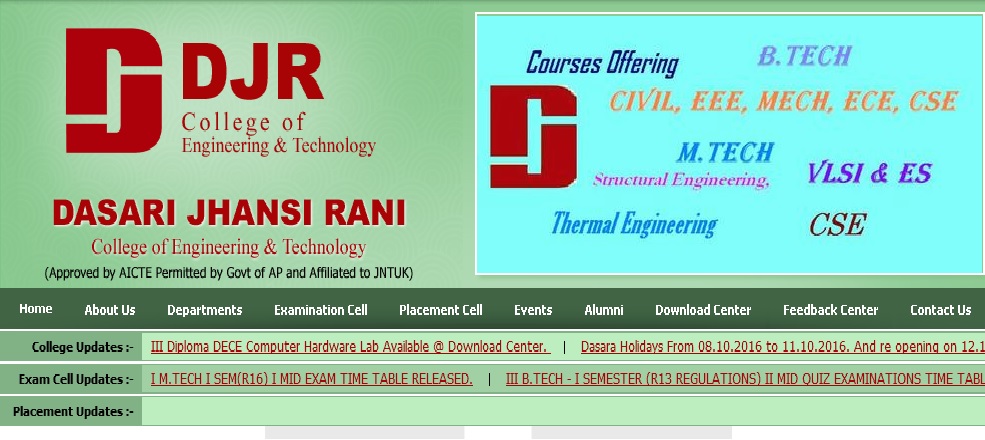RR420501 Embedded Systems B.E Question Paper : djriet.edu.in
Name of the College : Dasari Jhansi Rani Institute Of Engineering And Technology
University : JNTUK
Department : Computer Science And Engineering
Subject Code/Name : RR420501 – Embedded Systems
Year : 2008
Degree : B.E
Year/Sem : IV/II
Website : djriet.edu.in
Document Type : Model Question Paper
Embedded Systems II Sem Supple : https://www.pdfquestion.in/uploads/dmice.ac.in/2804-RR420501-EMBEDDED-SYSTEMS.pdf
Embedded Systems II Sem Regular : https://www.pdfquestion.in/uploads/dmice.ac.in/2804_RR420501-EMBEDDED-SYSTEMS.pdf
Embedded Systems I Sem Regular : https://www.pdfquestion.in/uploads/djriet.edu.in/2804–R05410501-EMBEDDED-SYSTEMS.pdf
DJRIET Embedded Systems Question Paper
(Computer Science & Engineering)
Time: 3 hours
Max Marks: 80
Answer any FIVE Questions
Related : Dasari Jhansi Rani Institute Of Engineering & Technology Cellular & Mobile Communication B.E Question Paper : www.pdfquestion.in/2803.html
Set No. 1
All Questions carry equal marks :
1. What are embedded systems? Define hard-real time and soft-real time embedded systems. Give any two examples for each of these two categories and justify why they are hard/soft real time embedded systems. [2+6+4+4]
2. Write Truth Table for the following types of gates and give one example for each type of gate where it can be used.
(a) 3-Input NAND gate
(b) 2-Input XOR gate
(c) 2-Input NOR gate
(d) NOT gate [4+4+4+4]

3. Explain the following
(a) Nested interrupts
(b) Polling
(c) Context switching
(d) Interrupt masking [4+4+4+4]
4. Discuss the important features of various software architectures adopted for embedded systems. [16]
5. What are the different methods by which an RTOS finds out that an interrupt routine is executing. Compare these methods with respect to the interrupt response time and ease of coding. [8+8]
6. Explain the terms ‘structure’, ‘modularity’, ‘encapsulation’, and ‘maintainability’ in the context of embedded software. [4+4+4+4]
7. Explain the differences between an ‘Host Computer System’ and a ‘Target System’ in terms of their hardware and software. [8+8]
8. Explain the important features of the following operating systems that are relevant to embedded applications.
(a) RT Linux
(b) Windows XP
(c) Win CE
(d) Vx works [4+4+4+4]
Set No. 2
1. Explain the functional block diagram of the following embedded applications.
(a) A GPS system
(b) A speech synthesizer
(c) An IVR system
(d) A digital Multimeter [4+4+4+4]
2. Explain the terms: ‘power supply decopling’, ‘open-collector output’, ‘Tristate output’, ‘fan-out’ for TTL logic gates. [4+4+4+4]
3. Explain the following
(a) Nested interrupts
(b) Polling
(c) Context switching
(d) Interrupt masking [4+4+4+4]
4. Explain the functions of a scheduler in an RTOS and how does the scheduler carryout those functions. [8+8]
5. What are the rules to be followed by the interrupt routines in RTOS? Why? [8+8]
6. Explain the need for encapsulating semaphores and queues with an example. [16]
7. Explain the different phases of software development cycle for embedded systems. [16]
8. Explain the functional blocks and the specification of the software of a GPS system. [16]
Set No. 3
1. Explain the important features of any two examples of embedded systems belonging to each of the following areas of applications.
(a) Consumer electronics
(b) Tele communications
(c) Data communications
(d) Wireless communication [4+4+4+4]
2. Write Truth Table for the following types of gates and give one example for each type of gate where it can be used.
(a) 3-Input NAND gate
(b) 2-Input XOR gate
(c) 2-Input NOR gate
(d) NOT gate [4+4+4+4]
3. Explain the following
(a) Interrupt handler
(b) Interrupt vector table
(c) Edge and Level triggered interrupts
(d) Interrupt priority [4+4+4+4]
4. Explain the functions of a scheduler in an RTOS and how does the scheduler carryout those functions. [8+8]
5. How memory management is done by an RTOS? Why is memory management not used in embedded systems? [8+8]
6. Write short notes on the following
(a) Hard real-time systems
(b) Soft real-time systems
(c) Time-slicing
(d) Encapsulation [4+4+4+4]
7. Explain the differences between an ‘Host Computer System’ and a ‘Target System’ in terms of their hardware and software. [8+8]
8. Explain the important features of the following operating systems that are relevant to embedded applications.
(a) RT Linux
(b) Windows XP
(c) Win CE
(d) Vx works [4+4+4+4]